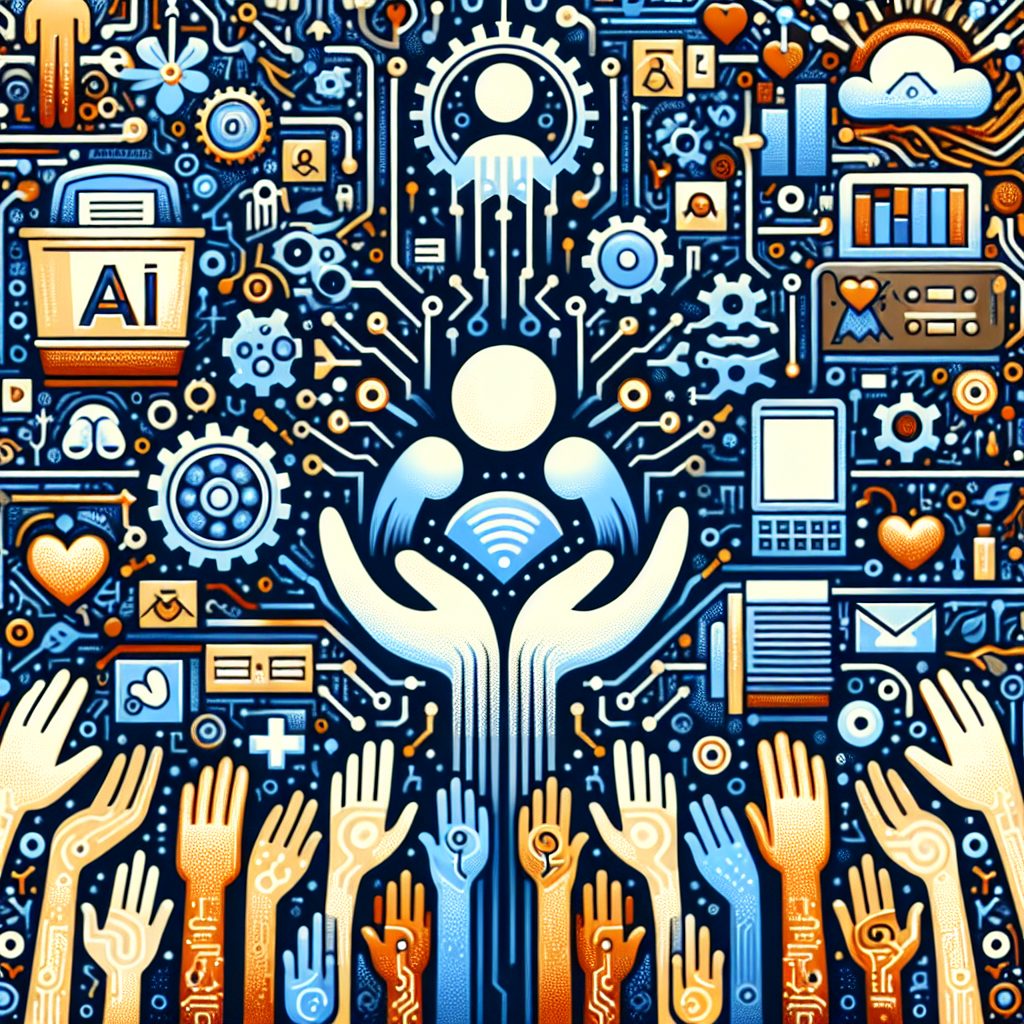Artificial intelligence (AI) is revolutionizing the way nonprofits engage with volunteers, making the process more efficient, personalized, and impactful. By leveraging the power of AI, organizations can better match volunteers with opportunities, communicate more effectively, and track their impact in real-time. This technology is transforming the nonprofit sector, allowing organizations to maximize their resources and make a greater impact on their communities.
One of the key ways AI is changing volunteer engagement is through improved matching algorithms. Traditionally, nonprofits have relied on manual processes to match volunteers with opportunities, which can be time-consuming and inefficient. With AI, organizations can now use sophisticated algorithms to analyze volunteer profiles and match them with opportunities that align with their skills, interests, and availability. This not only saves time for both volunteers and organizations but also ensures that volunteers are placed in roles where they can make the greatest impact.
AI is also transforming how nonprofits communicate with volunteers. Through chatbots and other AI-powered tools, organizations can provide personalized and timely information to volunteers, answer their questions, and keep them engaged throughout their volunteer experience. This level of communication not only helps volunteers feel valued and supported but also increases their likelihood of staying involved with the organization long-term.
Furthermore, AI is enabling nonprofits to track the impact of their volunteers in real-time. By analyzing data from volunteer activities, organizations can gain insights into the effectiveness of their programs, identify areas for improvement, and demonstrate the impact of their work to donors and stakeholders. This level of transparency and accountability is crucial for building trust with supporters and ensuring that resources are being used effectively.
Overall, AI is revolutionizing the way nonprofits engage with volunteers by making the process more efficient, personalized, and impactful. By leveraging this technology, organizations can maximize their resources, engage volunteers more effectively, and make a greater impact on their communities.
FAQs:
Q: How can nonprofits use AI to match volunteers with opportunities?
A: Nonprofits can use AI-powered algorithms to analyze volunteer profiles and match them with opportunities based on their skills, interests, and availability. This saves time for both volunteers and organizations and ensures that volunteers are placed in roles where they can make the greatest impact.
Q: How can AI improve communication between nonprofits and volunteers?
A: AI-powered tools such as chatbots can provide personalized and timely information to volunteers, answer their questions, and keep them engaged throughout their volunteer experience. This level of communication helps volunteers feel valued and supported, increasing their likelihood of staying involved with the organization long-term.
Q: How can AI help nonprofits track the impact of their volunteers?
A: By analyzing data from volunteer activities, nonprofits can gain insights into the effectiveness of their programs, identify areas for improvement, and demonstrate the impact of their work to donors and stakeholders. This level of transparency and accountability is crucial for building trust with supporters and ensuring that resources are being used effectively.
Q: What are some examples of nonprofits using AI to engage with volunteers?
A: One example is the Red Cross, which uses AI-powered algorithms to match volunteers with disaster response opportunities. Another example is Habitat for Humanity, which uses chatbots to communicate with volunteers and provide them with personalized information and support.
In conclusion, AI is transforming the way nonprofits engage with volunteers, making the process more efficient, personalized, and impactful. By leveraging the power of AI, organizations can better match volunteers with opportunities, communicate more effectively, and track their impact in real-time. This technology is revolutionizing the nonprofit sector, allowing organizations to maximize their resources and make a greater impact on their communities.

